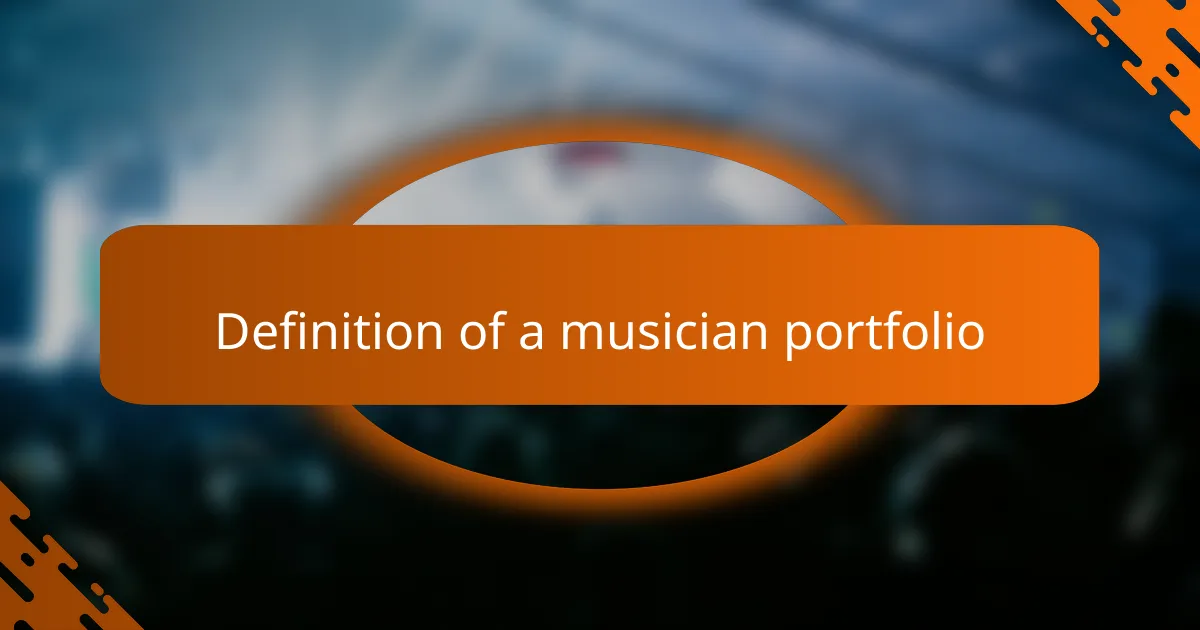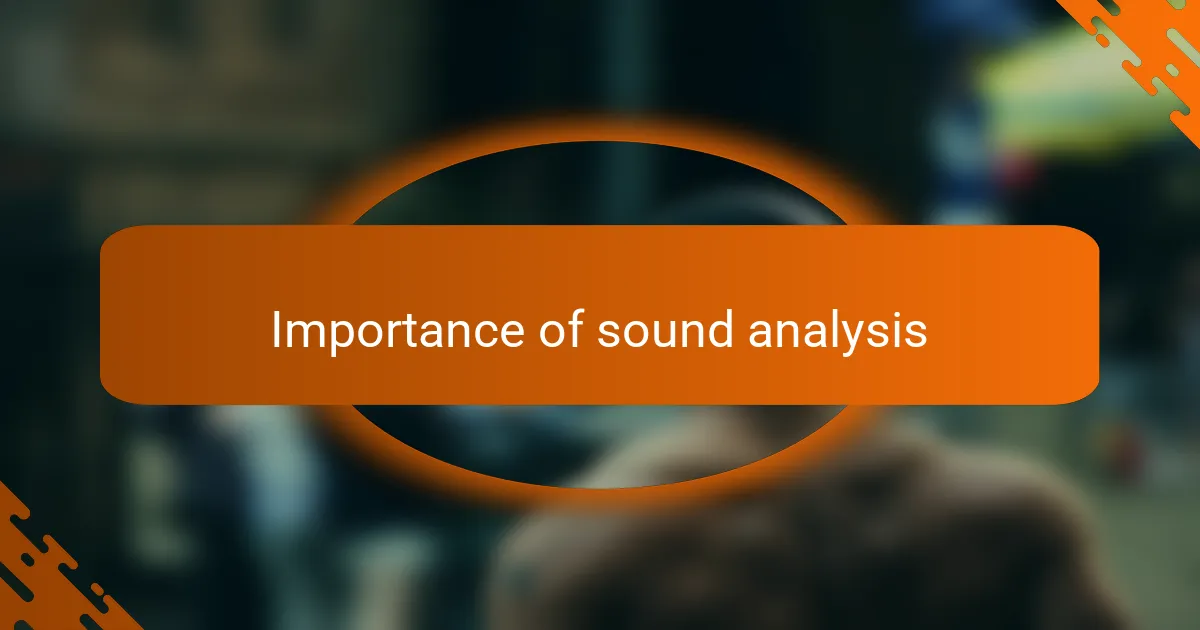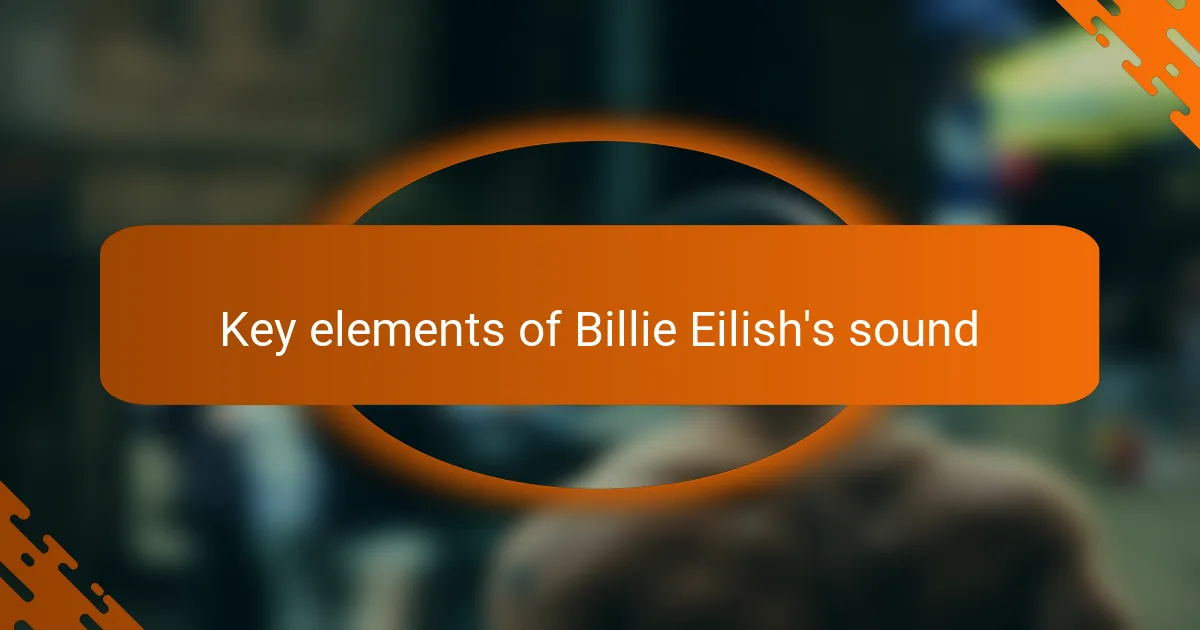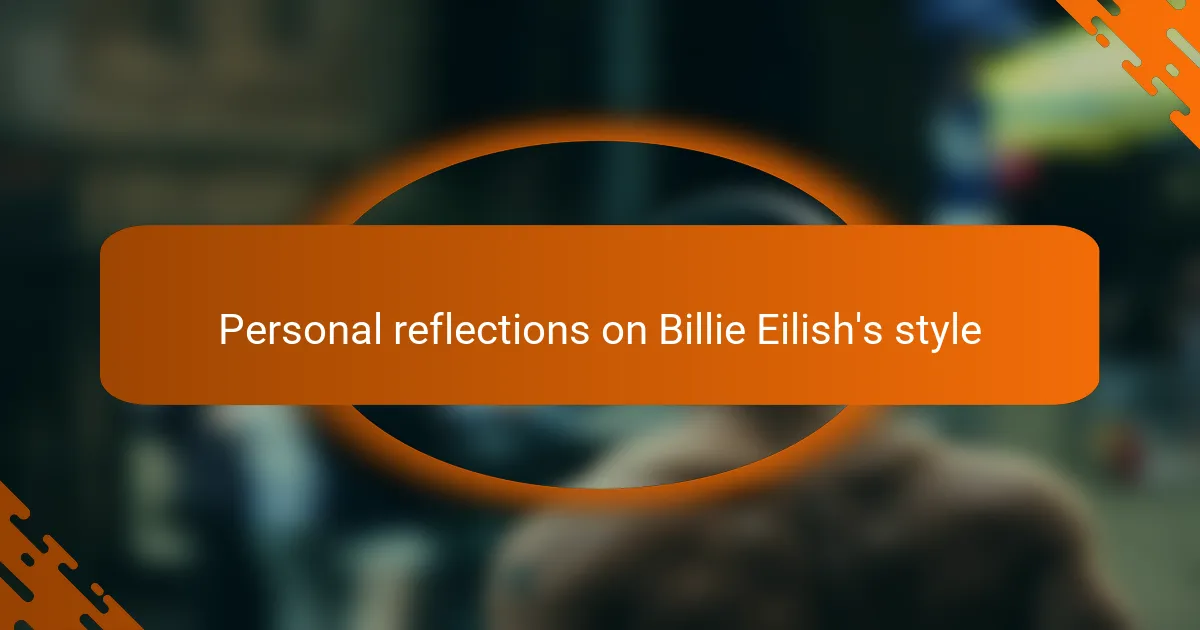Key takeaways
- A musician portfolio is a curated collection showcasing an artist’s work, including recordings, videos, and personal reflections that convey their journey and emotional connection with the audience.
- Sound analysis is essential for understanding an artist’s uniqueness, as it reveals emotional depth and fosters a stronger connection between the artist and the listener.
- Billie Eilish’s music features intimate whispered vocals, minimalist production, and innovative techniques, creating a hauntingly relatable experience for listeners.
- Key lessons from analyzing her sound emphasize the importance of authenticity, the impactful use of silence, and the encouragement of individuality in music creation.

Definition of a musician portfolio
A musician portfolio is essentially a curated collection of an artist’s work that showcases their talent, skills, and style. It can include recordings, videos of live performances, songwriting samples, and even personal reflections on creative processes. As I developed my own portfolio, I discovered how important it is to express not just what I create, but also who I am as an artist.
In my experience, a strong portfolio tells a story. It reflects my journey, my passion for music, and the sound I aim to cultivate. This is not only about sharing what I’ve done; it’s about connecting emotionally with the audience and leaving a lasting impression.
- A compilation of original songs or compositions
- Live performance videos to demonstrate stage presence
- Personal and artistic statements reflecting your musical vision
- Collaborations with other musicians or artists
- Press coverage or reviews to enhance credibility
- Social media links showcasing engagement with fans

Importance of sound analysis
Analyzing sound is crucial to understanding what makes an artist unique. For instance, when I first delved into Billie Eilish’s music, I was captivated by the way her haunting melodies intertwine with sparse instrumental backdrops. This stripped-down approach creates an intimate connection with the listener, allowing me to feel every emotion she pours into her songs.
Moreover, dissecting sound helps us appreciate the nuances that can easily be overlooked. Identifying the layers within her tracks not only reveals her artistry but also deepens my emotional response. For example, the whisper-like vocals paired with strong lyrical themes create a sense of vulnerability that resonates powerfully. Here are some key reasons why sound analysis is vital:
- It uncovers the emotional depth behind the music.
- It enhances listening experiences by revealing intricate details.
- It fosters a deeper connection between the artist and the audience.
- It encourages personal interpretation and insight into the art.
- It highlights the innovative use of production techniques.

Key elements of Billie Eilish’s sound
Billie Eilish’s sound is characterized by its unique blend of intimacy and innovation. It’s almost as if she invites listeners into her world, sharing raw emotions through whispered vocals and minimalistic production. I remember the first time I really listened to “When the Party’s Over” — the way the simplicity of the piano paired with her haunting voice left me feeling vulnerable yet connected.
One of the key elements that stands out in her music is the use of unconventional sounds. She often incorporates ambient noises, surprising vocal techniques, and layered harmonies, which create an almost otherworldly atmosphere in her tracks. Each time I analyze her songs, I discover new details that captivate me in different ways.
- Whispered vocals that evoke intimacy
- Layered harmonies that build emotional depth
- Minimalist production with strategic instrumentation
- Use of ambient sounds and noise to create mood
- Personal storytelling reflected in lyrical content
- Innovative mixing techniques that enhance listening experience

Techniques for sound analysis
One of the most fascinating aspects of sound analysis lies in the techniques that help dissect an artist’s unique style. In Billie Eilish’s work, I often find that layering is a powerful technique, allowing her to create a rich tapestry of sounds. Each track captures an emotional depth that feels both intimate and expansive, often luring listeners into a world that’s distinctly her own. I can remember the first time I truly immersed myself in her song “Ocean Eyes” — the way her voice floated above delicate instrumentals felt like a gentle wave washing over me.
When analyzing sound, I focus on these key techniques:
- Layering: Overlapping different audio tracks to create depth.
- Dynamics: Varying the loudness to evoke emotion and tension.
- Sampling: Incorporating snippets of other works to enhance storytelling.
- Vocal Production: Experimenting with effects like reverb and pitch shifting, giving vocals a unique character.
- Rhythmic Variation: Playing with tempo and beat patterns to keep the listener engaged.
These techniques, particularly in Eilish’s music, make audio analysis an adventure into the emotion behind the sound. I have often laughed and cried during my deep dives, realizing how intricate and intentional her work really is.

Personal reflections on Billie Eilish’s style
Billie Eilish’s style resonates with a raw intensity that is hard to ignore. I remember the first time I listened to “Ocean Eyes.” The haunting blend of her ethereal voice with the gentle production took me to a place of introspection. It’s not just her music but the way she crafts a narrative that feels deeply personal yet universally relatable.
What stands out for me in her sound is the use of silence as much as melody. This minimalist approach creates space for emotions to breathe and linger. I often find myself reflecting on how her vulnerably poignant lyrics draw me in, making me feel every word she sings.
- Vocal delivery: Billie’s whispery, intimate singing style contrasts with powerful lyrical content.
- Production choices: The minimalist instrumentation often enhances the emotional weight of her songs.
- Lyricism: Themes of self-reflection and mental health resonate deeply, making her music impactful.
- Visual style: Her unique fashion choices and music videos add another layer to her artistic expression.
- Authenticity: Billie remains true to herself, which creates a genuine connection with her audience.

Lessons learned from the analysis
When analyzing Billie Eilish’s sound, I discovered the importance of authenticity in her music. Her ability to blend vulnerability with strength resonates deeply with listeners, and I felt a strong connection to her storytelling. Personally, this reminds me of how powerful it can be to share one’s truth through art, as it often creates a genuine bond with the audience.
Moreover, I learned that the use of space and silence in her tracks is a crucial element. It creates tension and draws listeners in, inviting them to engage deeply with the lyrics. I remember the first time I noticed the impact of silence in a song—it was eye-opening and taught me to appreciate the pauses that make the music breathe.
This analysis reinforced the idea that creativity thrives in unique perspectives. It’s a reminder to all musicians to embrace their individuality and produce sounds that reflect who they truly are, rather than conforming to expectations.
| Aspect | Billie Eilish’s Sound |
|---|---|
| Authenticity | Deeply personal and relatable, fostering emotional connections |
| Use of Silence | Creates tension and enhances the listening experience |
| Unique Perspective | Encourages individuality and self-expression in music |